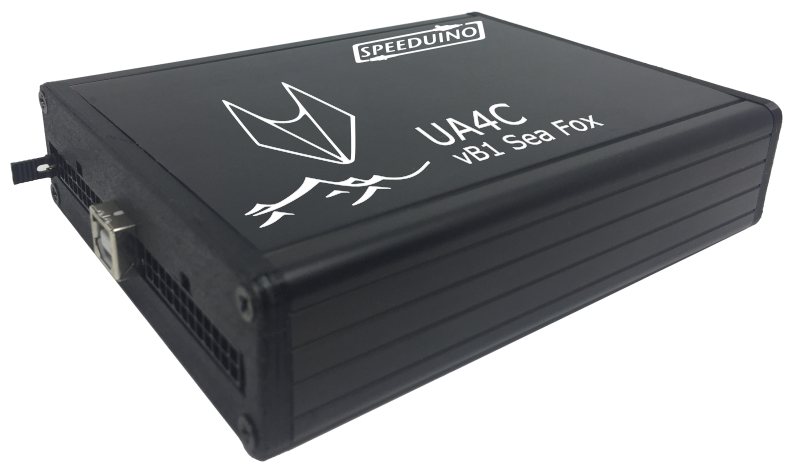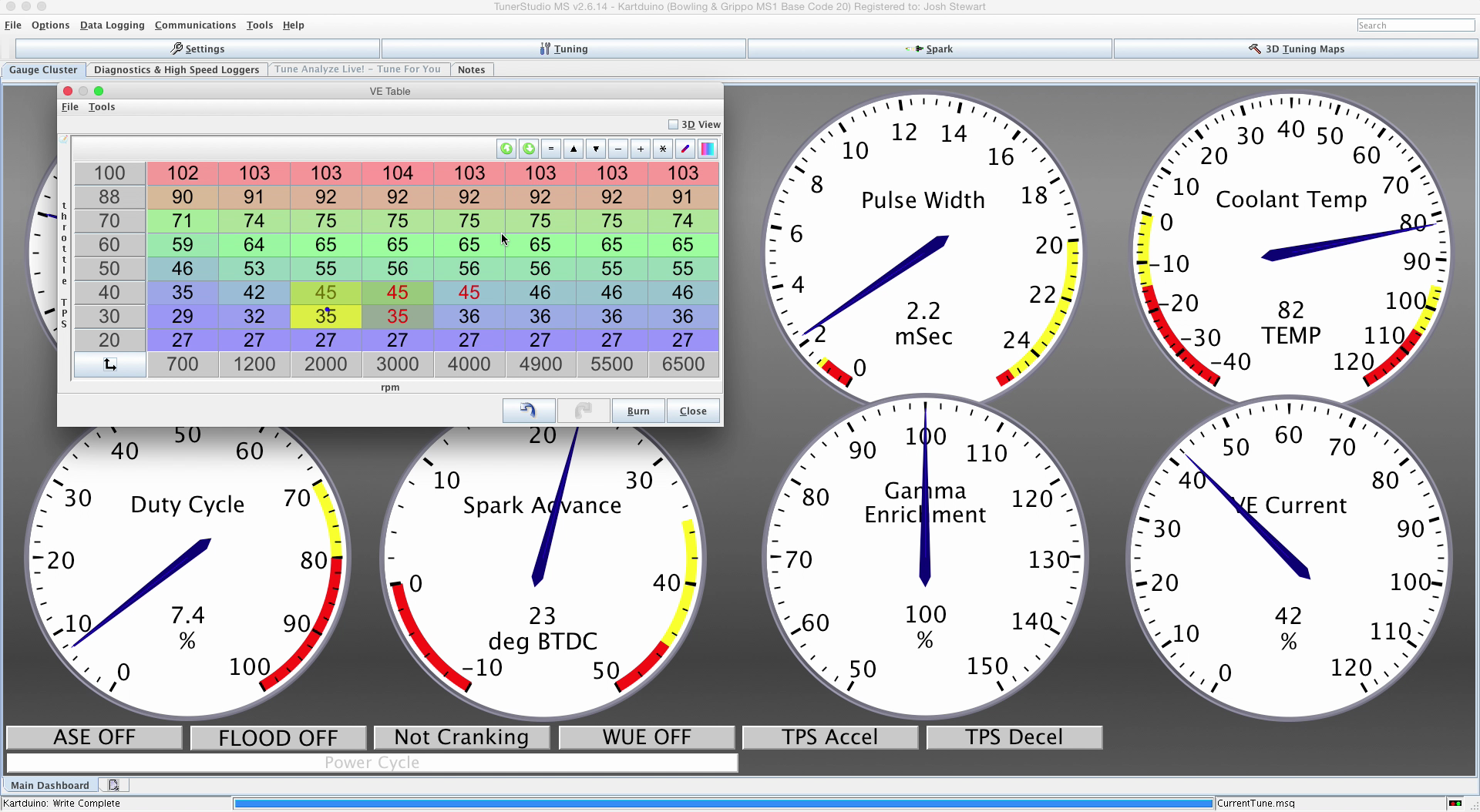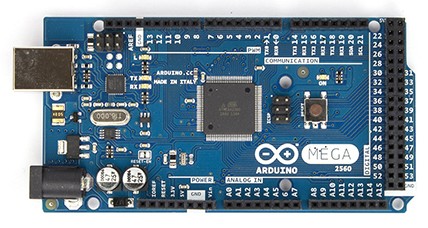UA4C (vB1 Sea Fox) Engine Control Unit (ECU)
Imported from the US, the UA4C (Under Arduino 4 Channel) is a high-quality, open source Engine Control Unit (ECU) which runs on the Arduino Mega, powered by Speeduino firmware, written by Josh Stewart.
The unit is programmed using TunerStudio software, over USB, with Windows 7, 8 or 10. No more antiquated DB9 Serial connectors and cables, with old software running on Windows 98 and XP!
16 x 16 3D fuel and ignition maps, with base of either TPS (Alpha-n) or MAP (Speed Density).
Supports up to 8 cylinders with 4 channels of fuel and 4 channels of ignition. 1, 2 (Even fire only), 3 and 4 cylinder engines with full sequential fuel and ignition. 6 (even fire only) and 8 cylinder engines are supported with wasted spark and 2 squirts per cycle. Rotaries are supported up to 2 rotors.
Click here for a full list of current features.
Programmed With - TunerStudio by EFI Analytics
TunerStudio brings a whole new level of refinement for tuning software. Expensive EFI controllers are no different, the tuning software is typically lacking in feature and refinement, making configuration confusing and overly complex.
With TunerStudio you can build amazing dashboards and real time graphics which let you monitor all your engine parameters on an easily customizable screen. You also get access to VE Analyze Live!
As you drive VE Analyze Live will look at all the data, filter out the junk, and use weighted statistical averages to calculate the optimal values for you Fuel tables. Yes, that's right. Your ECU auto-tunes your engine while you drive.
See all the amazing features of TunerStudio here.
About The UA4C - (vB1 Sea Fox)
The UA4C uses SMD technology to make a 4 ignition/4 injection channel board smaller, with more features, and cheaper. It is a bottom mounted Arduino MEGA shield. The MEGA is placed upside down on top of it. This makes the total package thickness less than 20mm. All of the outputs (except for stepper idle) include an LED for quick troubleshooting during setup. An externally accessible jumper block resets the system when a USB cable is connected.
Outputs
– 4 ignition channels, logic 5V, 330mA max pulse
– 4 injector channels, ground switching
– 4 high current outputs (idle, idle2, boost, vvt) ground switching
– 8 low current outputs (fuel pump, tachometer, fan, fan2, aux1-4) ground switching
– Accepts DRV8825 module for stepper idle control
Inputs
– 2 triggers (crank, cam, etc, logic level with socket for conditioner modules)
– MAP (250 or 400kPa) and separate barometer
– Voltage correction
– Throttle position
– Coolant and incoming air temperature
– Oxygen
– Flex fuel
– Launch
– Knock (future code update)
– 2 spare inputs
Communications
– Serial3 routed to external connector (optional CAN with future module)
– Bluetooth header with blocking diode to allow use of USB
Powered By Speeduino (Open Source Firmware)
The UA4C ECU is powered by the Speeduino firmware for Arduino, and the board itself is an SMD variant of the Speeduino v0.3 and v0.4 boards, originally developed by Josh Stewart.
NOTICE: This is an unofficial Speeduino board. Josh Stewart was very kind in adding a definition for this board to the Speeduino code. However, purchases of this board do not directly contribute to his upkeep and updates to the Speeduino software and website. PLEASE consider visiting Speeduino Forum and clicking Support Speeduino at the top.
The Speeduino project aims to create a fully featured, totally open source (Hardware and firmware) Engine Management System (EMS) / Engine Control Unit (ECU) on top of the Arduino Mega platform. The specific aims of the Speeduino project are:
- Low barrier to entry (i.e. price and availability of hardware, clear, well documented code, easily accessible software development etc)
- Capabilities / Features
- Simplicity of development
Both the hardware and software/firmware sides of the system are all available under open licenses.
Why Is This a Great Platform for an ECU?
Firstly, seeing as the Arduino Platform is also open source and has a huge community of makers, users and contributors, there are always new and exciting hardware and software updates, with new functions to look forward to.
Secondly, all of the firmware which is driving your ECU is also open source and can be customized, adjusted and adapted using the Arduino programming IDE. You can find the Arduino programming software here.
For further reference, see the Arduino language reference and tutorials.
The AtMEGA2560 microcontroller at the heart of the Arduino is a powerful chip, running at 16MHz, with dozens of interface features, including digital and analog I/O, serial ports for communication and several high-speed timers and interrupts.
The serial ports on the Arduino Mega are also broken out to the UA4C ECU so you can add either an external BlueTooth module or even a CAN transceiver. This leads to unlimited options for custom data logging and display development. You can even interface to third-party software apps (tutorials coming soon) such as RealDash (Have a look at the website and behold the awesomeness.) by using their REALDASH CAN PROTOCOL to build a Channel Description File (XML).
Overview of the Arduino Mega
The Arduino Mega 2560 is a microcontroller board based on the ATmega2560. It has 54 digital input/output pins (of which 15 can be used as PWM outputs), 16 analog inputs, 4 UARTs (hardware serial ports), a 16 MHz crystal oscillator, a USB connection, a power jack, an ICSP header, and a reset button. It contains everything needed to support the microcontroller; simply connect it to a computer with a USB cable or power it with a AC-to-DC adapter or battery to get started.
| Microcontroller | ATmega2560 |
| Operating Voltage | 5V |
| Input Voltage (recommended) | 7-12V |
| Input Voltage (limit) | 6-20V |
| Digital I/O Pins | 54 (of which 15 provide PWM output) |
| Analog Input Pins | 16 |
| Flash Memory | 256 KB of which 8 KB used by bootloader |
| SRAM | 8 KB |
| EEPROM | 4 KB |
| Clock Speed | 16 MHz |







